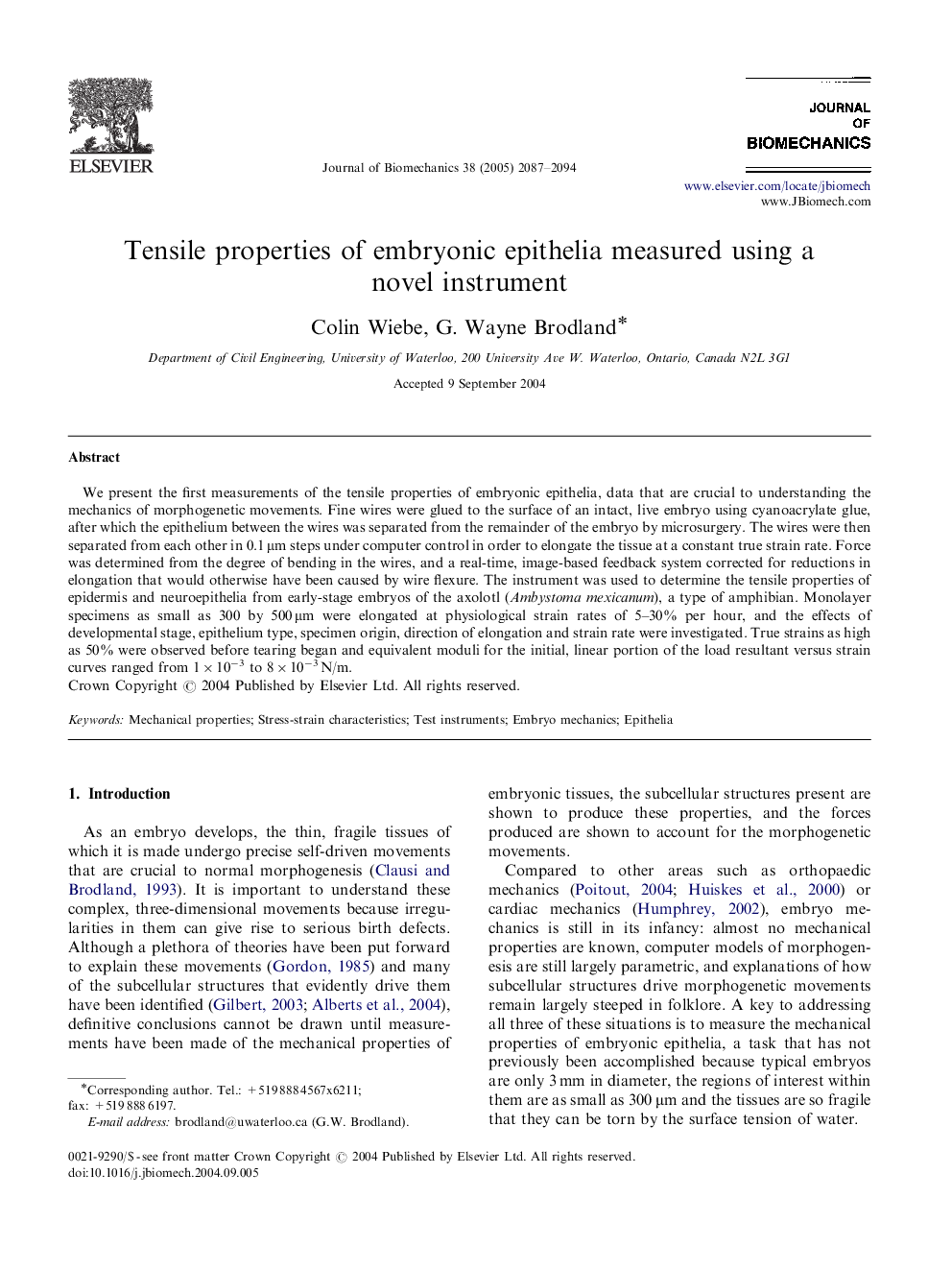| Article ID | Journal | Published Year | Pages | File Type |
|---|---|---|---|---|
| 874885 | Journal of Biomechanics | 2005 | 8 Pages |
We present the first measurements of the tensile properties of embryonic epithelia, data that are crucial to understanding the mechanics of morphogenetic movements. Fine wires were glued to the surface of an intact, live embryo using cyanoacrylate glue, after which the epithelium between the wires was separated from the remainder of the embryo by microsurgery. The wires were then separated from each other in 0.1 μm steps under computer control in order to elongate the tissue at a constant true strain rate. Force was determined from the degree of bending in the wires, and a real-time, image-based feedback system corrected for reductions in elongation that would otherwise have been caused by wire flexure. The instrument was used to determine the tensile properties of epidermis and neuroepithelia from early-stage embryos of the axolotl (Ambystoma mexicanum), a type of amphibian. Monolayer specimens as small as 300 by 500 μm were elongated at physiological strain rates of 5–30% per hour, and the effects of developmental stage, epithelium type, specimen origin, direction of elongation and strain rate were investigated. True strains as high as 50% were observed before tearing began and equivalent moduli for the initial, linear portion of the load resultant versus strain curves ranged from 1×10−3 to 8×10−3 N/m.
